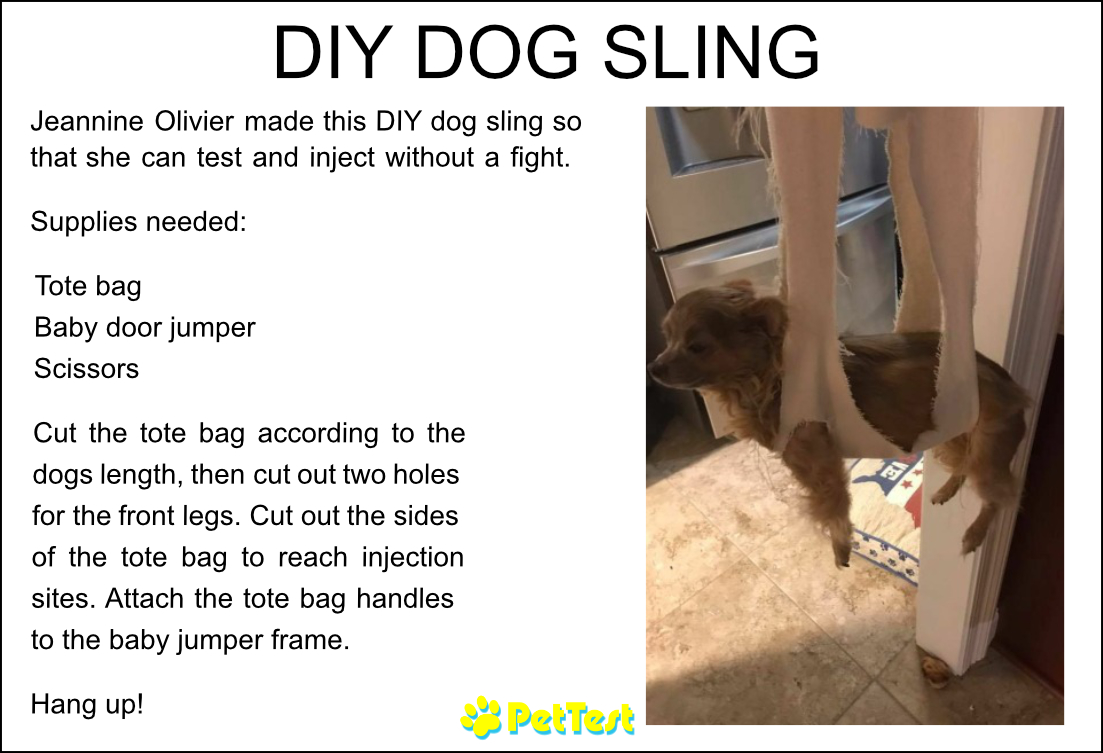The Difficult Dog – Tips on Testing and Injecting
I was lucky enough to have a dog that had no issue with testing or injecting. Lucy was a very laid-back dog when it came to all things diabetes, but I often see members in our Facebook group that have a hard time lancing for a blood sample and/or injecting insulin. A lot of times our dogs respond to our stress and become reactive, but there are difficult dogs out there. My little non-diabetic Bella was just about impossible to treat for anything including nail trims. She attacked one of our cats and got scratched on her eyeball, luckily it wasn’t bad but she needed eye drops multiple times throughout the day for weeks. It was a struggle initially but wrapping her in a towel and using the “football” hold helped. After several days she relinquished and administering eye drops became much easier. She never did learn from the experience and the same happened two more times…talk about a stubborn Chihuahua!
I also had a member who had a diabetic Yorkie, Molly Moo aka Chomperella who hated being tested. She bit Emma on multiple occasions, but Emma persisted, and soon enough Molly Moo got used to testing time.
There are several things you can do to get your diabetic dog used to testing and injecting. Let’s go over some tips that have really helped others!
If you’re stressed, they’re stressed.
It is understandable to be nervous or worried when we first start testing blood glucose levels and injecting insulin. Many of us have never given an injection or tested before. If you are nervous take a few minutes before testing or injecting to calm yourself down. I told myself, “I am saving her life” and repeating this to myself really helped.
Get them used to you touching testing and injecting areas.
Sitting and rubbing the area you are going to test or gently tenting the area where you inject helps desensitize them. I sat with Lucy multiple times throughout the day, rubbed her ear and tented where I injected. She got to the point where she did not react to me touching her ear or tenting her skin.
Massage and warm lancing area.
Before lancing to test blood glucose levels, massage the area to get blood flowing. You can also use a rice pack that is gently warmed to help get blood flowing.
Positive training with treats.
Training with carbohydrate free treats is a great option, especially if your dog is food driven. You can give a treat before testing or injecting and then another immediately after. This reinforces that what is happening is a good thing. Lucy was a fan of vegetables and I always had cut celery or cooked green beans available. If your dog is not a fan of vegetables, you can always give a single protein treat like chicken breast Purebites.
Distraction with lick pads.
Lick pads are a great option when it comes to injection time, it is a great distraction. Many of them have suction cups so you can stick them to the dishwasher door. Just slather with a bit of plain Greek yogurt or meat baby food. To purchase a lick pad from PetTest please click here.
Make sure that you warm the filled syringe before injecting.
After filling your syringe with insulin, put it in between your fingers for a minute to warm the insulin. Since most of us keep our insulin in the refrigerator it needs to be warmed first, cold insulin burns.
Make sure that needle on the syringe is bevel up.
Needles on syringes are made to be used bevel side up, this way the needles gently slices into the skin instead of tearing into it. Here is a graphic for reference.

Desensitize injection area.
My friend is an RN and suggested scratching the spot I was going to inject and this really helps. Ever so often Lucy would react to an injection but once I started scratching that spot she didn’t even feel it.
You can also use a numbing agent like the CoolShot. It is a dermal numbing device that works by chilling the skin and gently numbs the injection area. While I never had to use the CoolShot for insulin injections, I did use it when I had to give Lucy intramuscular injections. To purchase a CoolShot please click here.
Try safety lancets for testing.
If you have a hard time getting a good blood sample, try safety lancets. They are very easy to use and take all the guesswork out of lancing your dog. 21-gauge lancets are recommended for dogs since they are a larger diameter needle and dogs have less capillaries than humans. Click here to take you to the PetTest 21-gauge Safety Lancets.
The PetTest Genteel is a gamechanger!
The PetTest Genteel uses vacuum suction to gently draw blood to the surface. We have had many people tell us that it was impossible to get a blood sample until they got the PetTest Genteel! Click here to take you to product.
A sling may be necessary.
If none of the tips above work for you and your dog, there are grooming slings you can purchase. We have several members that use them and are now able to test and inject their dog without issue. They are available at most pet stores and on Amazon. If you prefer to make your own sling, here are instructions:

I hope that these tips work for you and your dog, I used several for Lucy and never had an issue with testing or injecting. And you can use some of these practices on any difficult dog that isn’t diabetic!
If you have any questions, comments or suggestions, please start a conversation below.
For a printable version of this blog click here.
Until next week stay comfy, don’t stress and you got this!
Michelle Miller-Matlock
AAHA Certified Diabetes Educator
Founder/Administrator of DDO: Diabetic Dog Owners University
Administrator of Diabetic Dog Owners on Facebook
Want to learn all you can in a simple and easy to follow format? Please join DDO-U: Diabetic Dog Owners University , graciously sponsored by PetTest.
Be sure to join the PetTest family on Facebook and Instagram. PetTest has fun, interactive posts AND they have fabulous giveaways every week!
Do you need a blood glucose meter kit for your diabetes arsenal? Click here to purchase one today!

